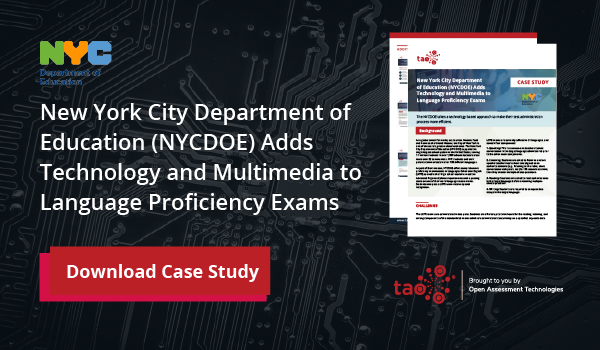Data from the most recent PIRLS survey (2021) revealed that in 71% of countries surveyed, more children were below minimum reading proficiency in 2021 than in 2016, 8 had no or little change, and only 3 had higher average achievement. This decline underscores the urgency of addressing literacy issues and the learning loss brought on by the pandemic. It also highlights the need for effective, evidence-based reading programs that can help reverse this problem.
Teaching students to read proficiently is a cornerstone of education, yet it’s one of the most complex challenges educators face. Each student is unique and developing a strategy to meet each student’s needs is equal parts science and art. To ensure students receive the most effective instruction, many states have begun to require schools and teachers to use evidence-based reading programs drawing on the Science of Reading.
Understanding what the Science of Reading is, what it is not, and how to use evidence-based reading practices in the classroom are all key elements of empowering students to read. In this article, we’ll explore what the science of reading is, why so much attention is being focused on it now, trends in the science of reading, and where online assessments fit in.
What is the Science of Reading?
For many reading programs, there is a set procedure or curriculum that a teacher uses in the classroom. Teaching reading using the Science of Reading is different in that it is philosophy in reading with the belief that educators should be using evidence-based practices when teaching reading. This means that there could be many different ways to successfully teach students using the Science of Reading, as long as the practices are evidence-based.
Although there are many different ways to teach reading, proponents of the Science of Reading note that there is evidence to support several core “pillars” behind the approach. These include:
- Phonemic awareness – Understanding the sound structure of language, including recognizing and manipulating sounds (phonemes) in words. Activities that focus on phonemic awareness, such as blending, segmenting, and rhyming exercises, are crucial for developing decoding skills.
- Phonics – Understanding the relationship between letters and sounds and using this knowledge to decode words. Explicit phonics instruction focuses on directly teaching these connections, helping students to decode words by sounding them out.
- Syntax and grammar – Understanding sentence structure and grammar is important for reading comprehension. Educators can use activities that focus on sentence construction, parts of speech, and punctuation to help students parse and understand written text.
- Fluency – Reading smoothly, accurately, and at an appropriate rate. Educators can encourage activities like repeated reading, reading aloud or together with the class, and partner reading.
- Vocabulary – Understanding the meanings of words and the context in which they are used. Educators can build students’ vocabulary by exposing them to a rich variety of words, incorporating vocabulary quizzes, and encouraging context-based learning.
- Comprehension – Understanding and interpreting the meaning of written text. Educators can use various strategies to improve comprehension, such as predicting, summarizing, questioning, clarifying, and visualizing written text.
By improving proficiency in each of these areas, experts argue that students can learn to read more effectively. Science of Reading strategies may include elements of all five pillars with an emphasis on delivering what is right for each student based on the student’s reading ability.
Why is the science of reading coming into focus now?
Teaching reading using the Science of Reading is not a wholly new concept – the research and evidence is decades old. So why is the Science of Reading coming into focus now?
The answer starts with the fact that many students are well behind grade level in reading, a number that grew substantially after the COVID-19 pandemic. With so many students struggling with literacy, school districts realized the need to adopt clear and cohesive strategies for teaching students to read.
In addition, for decades educators have been fighting what has become known as the “reading wars:” a battle between educators who believed in a phonics-first approach and educators who felt like reading at a whole language level was more effective. Although for years phonics education was often neglected, especially as students got older, a series of reports shed a new light on their effectiveness as well as the shortcomings of whole-word language reading techniques. With this newfound set of information, school districts and government officials began to adopt a more balanced approach to teaching reading that is based on science and evidence-based reading practice.
Trends to Watch
Several key trends are emerging that are reshaping how we teach students to read. These trends reflect a deeper understanding of the cognitive processes behind reading, a shift towards more personalized and technology-enhanced learning, a greater focus on early intervention, and an emphasis on robust teacher training:
- Neuroscience and Reading: Advances in neuroscience are providing insights into how the brain processes language and how reading skills develop. Neuroimaging studies are helping researchers understand the neural pathways involved in reading and how these pathways may differ in individuals with reading difficulties.
- Personalized Learning: The science of reading is driving a shift towards personalized learning approaches. Educators are increasingly using data-driven methods and universal design principles to tailor instruction to individual student’s needs, including targeted interventions for students with reading difficulties. Reading assessment tools are also becoming more personalized, allowing for accurate assessment and improving student learning outcomes.
- Technology and Reading: Digital reading assessment tools and applications are being developed to support literacy development using different Science of Reading strategies. These tools can provide interactive experiences that engage students and help them practice reading skills in a variety of contexts that also build students’ digital literacy skills.
- Early Intervention: There is a growing recognition of the importance of early intervention for teaching reading to children at risk for reading difficulties. Screening tools and early literacy programs are being implemented to identify and support children who may need additional help with reading.
- Teacher Training and Professional Development: With strategies for teaching reading and literacy evolving, there is an increased focus on providing teachers with the knowledge and skills they need to effectively teach reading. Professional development programs are incorporating the latest research in the Science of Reading to help teachers implement evidence-based practices in the classroom.
Where Does Assessment Fit In?
Regularly assessing students’ reading skills and tracking their progress is crucial. Educators can use various assessment tools to identify areas where students need additional support and tailor instruction accordingly.. Online reading assessment tools, such as TAO, allow educators to seamlessly integrate adaptive questions and analyze large data sets from reading tests and quizzes. All of this allows teachers to know where their students are and where they need to grow.
Using online assessment tools to identify areas of growth means that teachers can use the Science of reading Strategies to address unique student needs. This also helps to ensure that each student receives a personalized educational experience, receiving just the right instruction at just the right time.
—
The Science of Reading has reshaped the way we think about literacy instruction, offering a comprehensive framework grounded in evidence-based practices. As the world grapples with the alarming statistics from the PIRLS survey and the learning loss exacerbated by the COVID-19 pandemic, there’s a greater imperative to adopt strategies that are proven to work. The combination of foundational skills—such as phonics, phonemic awareness, and vocabulary development—with modern trends like personalized learning and technology integration, provides a pathway to reverse the declining literacy rates.
Teacher training and professional development are central to this shift, empowering educators with the knowledge and skills to deliver effective reading instruction. Early intervention and targeted support for struggling readers can also play a pivotal role in catching literacy issues before they escalate. And with the support of advanced online assessment tools, educators can better track student progress and customize their approach to meet individual needs. As we move forward, the success of literacy education will depend on our commitment to evidence-based practices, continued investment in teacher development, and the thoughtful use of technology to enhance learning.


